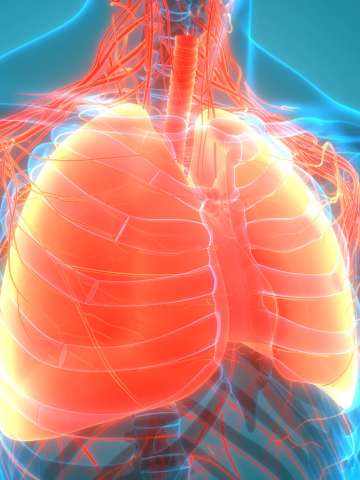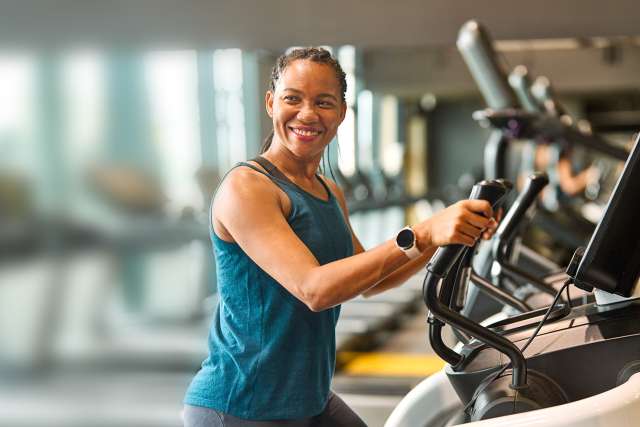Pulmonary Rehabilitation
Our comprehensive pulmonary rehabilitation program helps you improve your respiratory function with exercise, education and mental health support. We use research-based therapies to improve your health and quality of life.

Why choose UCLA Health for pulmonary rehab?
The UCLA Health pulmonary rehabilitation team helps people with chronic respiratory diseases improve their lung function. We offer individualized therapy plans that involve cardiovascular exercise, strength training and education to help you get healthier and improve your quality of life.
Highlights of our program include:
Coordinated, team-based care: Our multidiscplinary team includes respiratory therapists, nurses, clinical exercise physiologists, pulmonologists, and psychologists. We work closely with your referring provider to ensure you receive timely, coordinated care.
Culture of innovation and research: We are constantly innovating and improving our care. For example, we have incorporated new protocols into our treatment plans to better serve patients dealing with long COVID. As part of an academic health system, we are often among the first to adopt new treatments, sometimes even before they become available to the public.
Specialized services: In addition to traditional pulmonary rehab, we offer specialized and unique services. For example, we work with the Los Angeles (LA) Opera to incorporate breathing and vocal exercises into our program. Several volunteers from the LA Opera host online sessions with our patients, where they complete mindfulness and breathing exercises and sing together.
What is Pulmonary Rehabilitation?
Pulmonary rehabilitation helps improve the quality of life for individuals with lung disease through supervised exercise classes, education, and psychosocial support. At UCLA Health, we use research-based therapies to improve our patients' health and quality of life. Our pulmonary rehabilitation team teaches patients to exercise with less shortness of breath and guides them in managing their lung condition. As the American Association of Cardiovascular and Pulmonary Rehabilitation (AACVPR) states, “Pulmonary Rehabilitation allows you to make the most of the limited lung function you have.”
The benefits of pulmonary rehabilitation include:
- Increase exercise tolerance
- Improve ability to handle activities of daily living
- Decrease symptoms
- Decrease anxiety and depression
Conditions We Treat with Pulmonary Rehab
Pulmonary rehabilitation may be a treatment for patients with chronic respiratory disease or who have had a lung transplant. Chronic respiratory diseases affect your lungs and airways and may include:
- Asthma: A chronic condition in which your airways swell and narrow, making breathing more difficult
- Bronchiectasis: A chronic condition in which damaged airways widen, leading to mucus buildup and a higher risk of infection
- Chronic bronchitis: Chronic inflammation in the breathing tubes (bronchi), leading to repetitive severe coughing spells
- Chronic obstructive pulmonary disease (COPD): A term for a group of diseases that interfere with breathing, including chronic bronchitis and emphysema
- Cystic fibrosis: A genetic disease that causes mucus to thicken and block the airways, leading to chronic coughing, wheezing and repeat lung infections
- Emphysema: A condition in which the lungs’ air sacs (alveoli) are damaged, leading to chronic coughing and shortness of breath
- Interstitial lung disease: A group of diseases that cause progressive lung scarring (fibrosis), leading to shortness of breath or a chronic dry cough
- Long COVID: Lung damage or other problems that occur after a COVID-19 infection, often causing shortness of breath or difficulty breathing
- Pulmonary fibrosis: A condition in which lung tissue thickens, leading to chronic shortness of breath
- Pulmonary hypertension: High blood pressure in the blood vessels (pulmonary arteries) that send blood from the heart to the lungs
What to expect during pulmonary rehabilitation
Pulmonary rehabilitation sessions typically occur twice a week. The structure of your sessions is personalized based on a comprehensive assessment of your overall medical condition and personal goals. A typical session includes:
Exercise: You may use a stationary bike, treadmill or other cardiorespiratory equipment while attached to a device that monitors your oxygen saturation. A respiratory therapist gives you real-time feedback and tips to improve your breathing while exercising. Supplemental oxygen may be used if needed to maintain an adequate saturation level while exercising.
Strength Training: You will work on arm, leg, and core strengthening exercises either with or without weights, as guided by the therapist.
Stretching: The session concludes with stretching, as guided by the therapist.
Education: After the exercise session, the team will provide education on topics that commonly affect people with respiratory diseases. For example, we may review proper inhaler use, pursed-lip breathing exercises, best practices for clearing secretions or tips for using external oxygen.
Psychology screening: You meet with a psychologist who screens for any mental health concerns, including anxiety and depression. If you need extra support, the psychologist can offer counseling and other recommendations for treatment.
Our expert team
Our team includes respiratory therapists, nurses, clinical exercise physiologists, pulmonologists, and psychologists who work closely with each other and you to create personalized, effective care plans. We use the most up-to-date approaches to help you increase your pulmonary function. We work closely with your referring provider to ensure you receive timely, coordinated care.
Medical Director
Contact us
Call 310-825-0014 to schedule an appointment for pulmonary rehabilitation at UCLA Health.
Find your care
We continually enhance our care based on the latest research and best practices. Call 310-825-0014 to learn more about pulmonary rehabilitation at UCLA Health.

